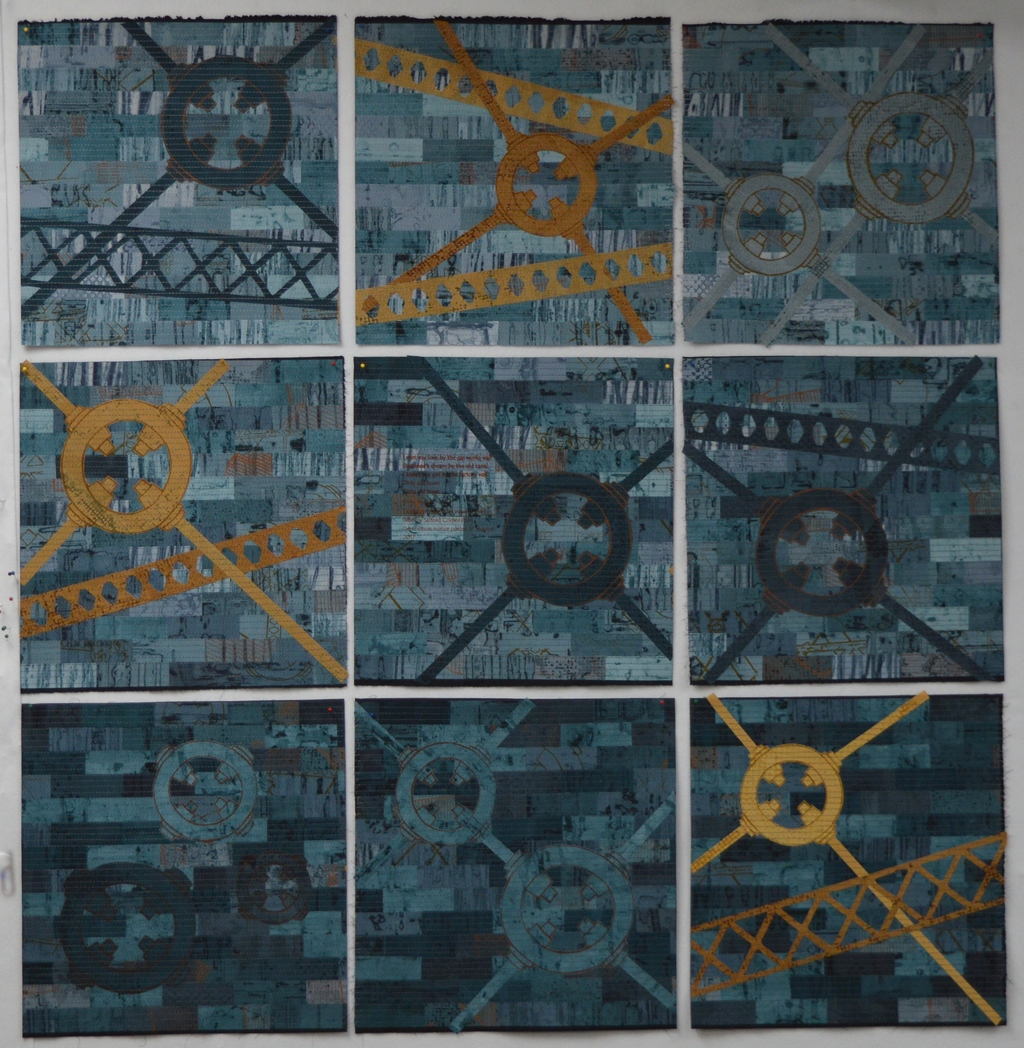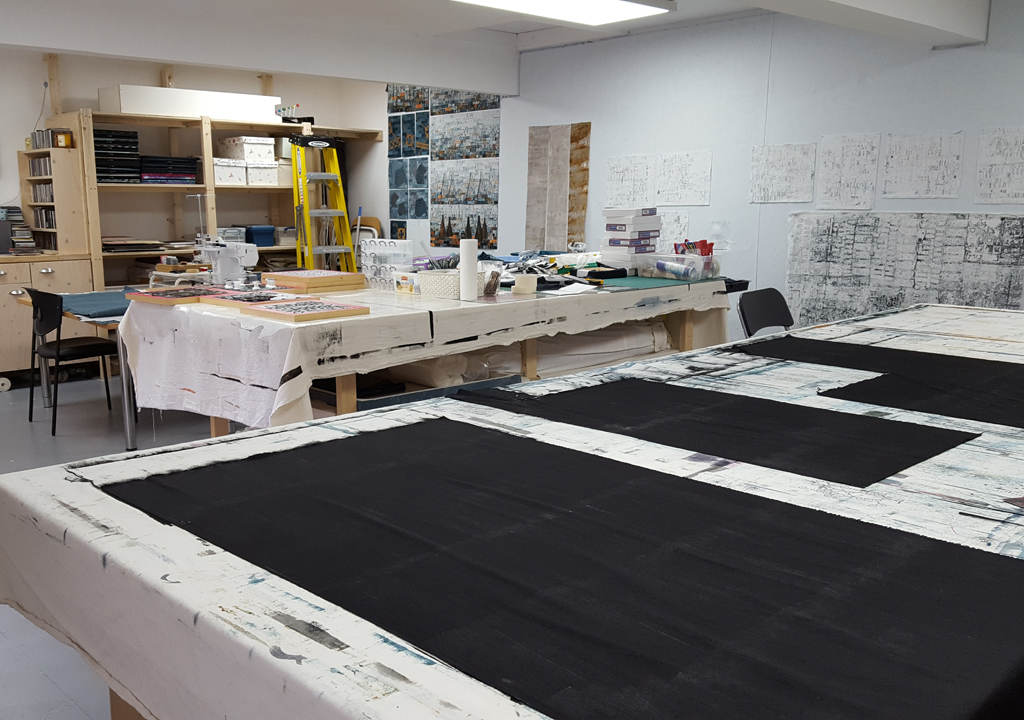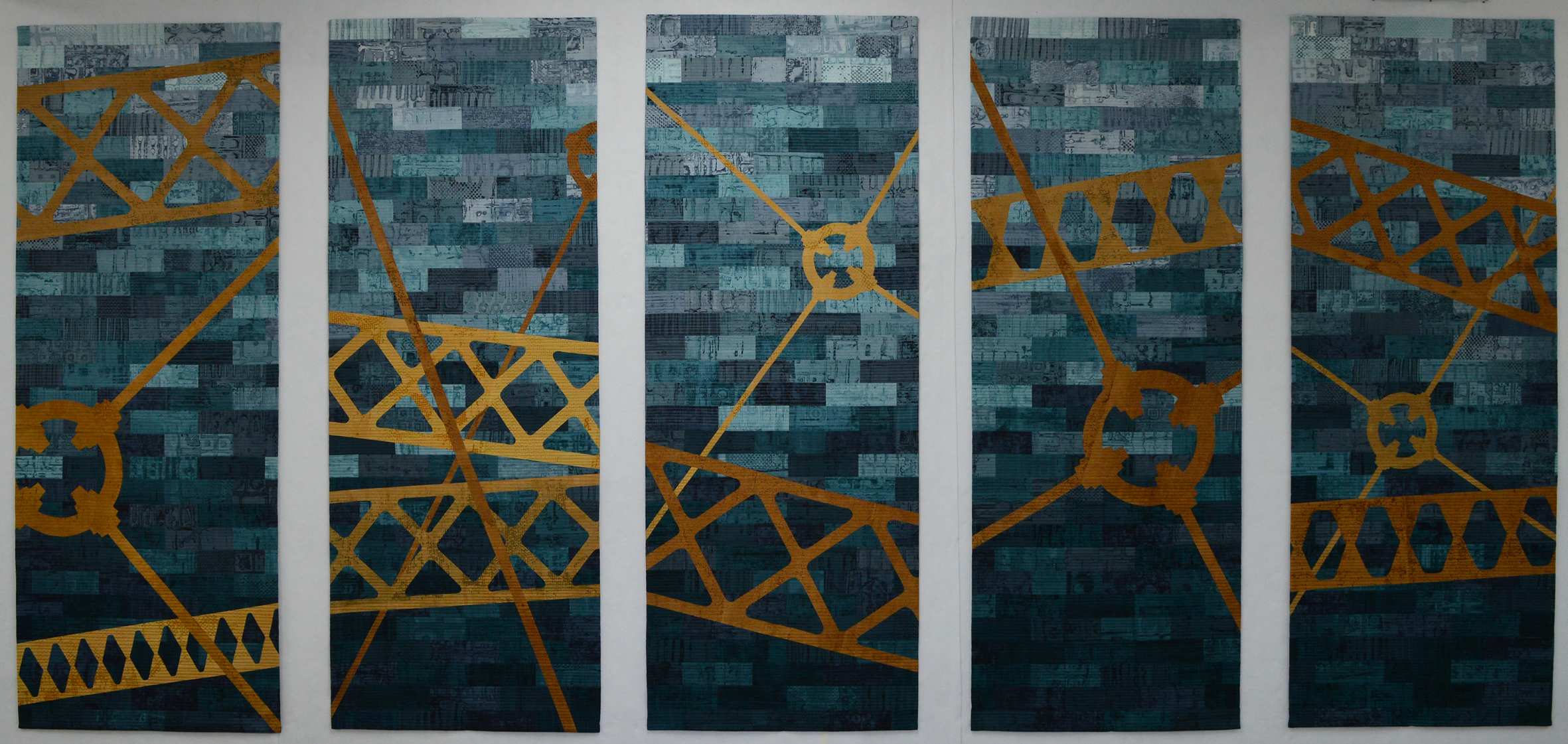Well maybe that is a little bit dramatic but it is now only 44 days until my exhibition with Helen Conway opens at The World of Glass in St Helens. And only 37 days until we drop off the art work. Today Helen and I met with the curator Hannah to discuss layout and the minutia of things we need to do between now and then.
Getting the layout of the exhibition finalised is really important. Hannah and her team will hang the work and we wanted to be sure that we have the right number of pieces to fill this beautiful space. Turns out we can include an extra 4 metres of wall without crowding the space. Good job I made more pieces than I thought I needed. It does however mean that I will need to correct the scaled 3D model I have made!
So my to do list for the next 37 days:
- Send out the remaining Preview Invites.
- Finish final quilt (the original piece was finished in December but I liked it so much that I submitted it to the European Quilt Triennial. So now I am making a replacement. A 135cm x 240cm replacement. Good job I work in series!).
- Cut, drill and label top and bottom battens for three large quilts.
- Make storage bags for each large quilt.
- Iron, de-lint and carefully roll three large quilts in tissue paper before storing in their bags.
- Add hanging mechanism and mirror plates to 20 small pieces stretched over canvas.
- Wrap these 20 pieces in bubble wrap, find a box to store them in and print out a hanging plan for them.
- Decide whether 6 medium sized pieces currently stretched over canvas would actually look better framed (OK so maybe I should of thought of this earlier!)
- Add hanging mechanism and mirror plates to said 6 pieces.
- Wrap them in bubble wrap and print out a hanging plan for them.
- Collect 8 framed pieces from Manchester Custom Framing.
- These will come with hanging mechanisms and will be carefully wrapped so will just need a hanging plan printing.
- Make labels for everything. Sounds simple, takes forever to get them perfect.
- Get postcards printed ready for sale in the gallery.
- Decide whether to have limited edition prints for sale and get them printed.
- Get poster printed onto foam board for entrance to gallery (Helen is organising the design).
- Organise something for visitors to leave their details and comments on.
- Sort out drinks and nibbles for the preview with Helen.
- Decide what I will wear (this is the item that stresses me out most!).
Easy!









 Those of you that follow my blog regularly will know that I made a very definite decision several years ago to always work in series. Doing so has helped me to develop as an artist - I spend a lot of time up front working on colour and on creating a palette of cloth but once I have that palette I am free to develop my ideas as I move from one piece to the next. And for my large pieces I do tend to get one to the finishing stages before starting work on the next. Many of my pieces are three metres wide or more. I am blessed with big print benches and a big design wall but it is not really practical to try to compose two large pieces at the same time.
Those of you that follow my blog regularly will know that I made a very definite decision several years ago to always work in series. Doing so has helped me to develop as an artist - I spend a lot of time up front working on colour and on creating a palette of cloth but once I have that palette I am free to develop my ideas as I move from one piece to the next. And for my large pieces I do tend to get one to the finishing stages before starting work on the next. Many of my pieces are three metres wide or more. I am blessed with big print benches and a big design wall but it is not really practical to try to compose two large pieces at the same time.



